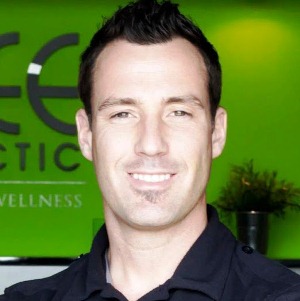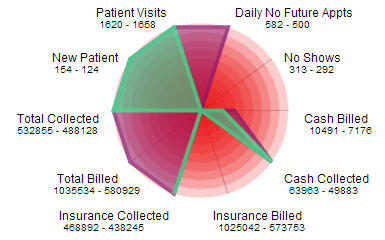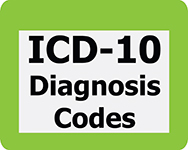The Loss that Led Me to Focus on Patient Experience in Chiropractic

In chiropractic school, we are taught to examine, identify problems, create care plans, and to adjust patients. A lucky, or more prepared, few of us may have taken outside seminars to learn about strategies to bring more patients into our office, billing tactics to increase revenue, or practice management techniques. Yet, for all that we learn, the hours and years we put in to become Doctors of Chiropractic, we are never taught the most important part of having a truly successful business. We’re never taught to focus on the patient experience. Just out of chiropractic school, I was no different. I was running what I believed was a successful practice. I was helping a lot of patients and making a lot of money.. At the same time, I was trying to wear too many hats – business owner, staff manager, doctor. Things were falling through the cracks without me knowing until it was too late. I will never forget the day one of my patients came in and told me he was thinking of killing himself. No doctor is every really prepared to hear something like this, much less, a young doctor, still learning. My patient’s name was Chris and he had come to see me for low back pain, something chiropractors see every day. He had received his report of findings, had proceeded with care, and was getting great results and relief from the pain. At his words, I felt shock. I asked what had happened. The story he told me was incredible. After coming to the class that I held for new patients, he had decided to turn his life around. Hearing the chiropractic message and learning how his health affected every aspect of his life as well as his family’s life, he had made a life-changing decision. He quit drinking. He quit drugs. He was going to get healthy for his wife and children and he was going to do it cold-turkey. But now, he felt like taking his own life. After listening to Chris’ story, I was amazed that he had been affected so deeply by the chiropractic message and thankful that he had truly understood it to the point that he was determined to change his health to improve the future for himself and his family. And, I’ll admit, I was proud that my class, my words, had been good enough to change a man’s life. Yet, how could someone who had understood the message on such a deep level now think of killing himself? Chris and I spoke about what he was feeling and how, after the years of punishment his body had been through, it was natural to have difficulty trying to achieve homeostasis again. I explained how the chemicals in his system had been affecting his whole life, including his thoughts and how things were now trying to balance out as his body fought to move toward health. He understood. He got it, just like he did the chiropractic message, and we continued care. Then came the day when I realized that Chris had not been in for a visit in a while. Chris had understood the chiropractic message so completely that he should have been a patient for life. I pulled his chart to find out what had happened. That is when it became clear that once again, something important had fallen through the cracks. Chris had missed appointments, yet we had not followed up with him. His care plan had expired and his billing was not in order. These things that are so vital to patient retention had been missed. I immediately called Chris to find out how he was and to set up an appointment for a follow-up. That is when I found out that Chris was dead. He had taken his own life, just like he had talked to me about. That is when I knew with complete certainty that the systems we had in place were not enough. We tried to call patients who missed appointments, follow-up on care plans, pre-arrange billing with patients, and so many other tasks every single day. Yet, sometimes, my staff became overwhelmed or simply forgot. Other times, they would give up calling a patient who had not responded. And, so many of our systems relied on memory, leaving my staff and I to juggle all of the responsibilities, hoping no one dropped the ball. We only knew to follow-up with patients when I or one of my staff realized someone had not been in to see us for a while. We only knew to check on insurance claims when someone remembered we had not been paid. I knew that other industries used different technologies and software to manage the customer experience. Yet, the Chiropractic profession had no software to manage the Chiropractic patient experience effectively. There were many chiropractic software companies and practice management softwares available. However, not a single one broke down the patient experience into manageable tasks. And, not one offered one simple daily report to let the doctor know whether the necessary tasks had been performed. Instead, they all forced the doctor to wade through piles of reports, to check each individual aspect of the practice, an ineffective and time-consuming chore, at best. To find a solution, I had to go outside of the chiropractic profession, to find out what big businesses use to manage the customer experience. Since that time, I have dedicated myself to finding a better technology to break down and manage every aspect of the patient experience and making it available to chiropractors. And, so that I would never forget the man who first opened my eyes to the necessity of managing the Chiropractic patient experience, I named my son Christian in his honor.
Monitor Your Chiropractic Practice Health at a Glance

Watch Your Chiropractic Practice Health and Get Back To Your Patients Faster Control your Chiropractic Practice Health! Chiropractic Practices rely on separate reports to understand where they are as a practice and a business. Separate reports require comparison and compilation in Excel or other spreadsheets to stack data and notice a trend over time. Comparison of rows of numbers is difficult without graphics to show trends. Imagine never pulling numbers out of reports to compare where you are and where your business is going. Imagine having a tool that enables you to track your daily business goals at a glance. Imagine the time savings that you can now spend with your patients. Well, imagine no more. The tool is called The Genesis Chiropractic Practice Health Monitor and you can learn about it in this 15 minute webinar.
Audit Proof Your Chiropractic Practice

An Audit Proof Chiropractic Practice is possible! Learn how to audit proof your Chiropractic Practice. Detect your audit risk areas at a glance. Improve your billing compliance by reducing unsigned notes and unbilled visits.
Chiropractic Software includes all ICD-10 codes

Are you and your Chiropractic Practice ready for ICD-10 and all of the new billing codes that you’ll need to know? Learn more about how your billing and collections will be impacted and learn how to avoid denied claims and underpayments. Read the transcript: Jess: All right. Good afternoon everyone and thank you for attending our webinar on ICD-10. Today’s presenters are Kathleen Casbarro and Mellisa Levine. Kathleen is the head of our SWAT department and she is a certified coder. She has been in this industry for 30 years and we have Mellisa Levine who is the head of our support department here at Vericle and she is responsible for over a hundred professionals, that’s been 500 practices and post 14 million in monthly payments. So welcome Kathleen and Mellisa. Kathleen: Thanks, Jess. Appreciate that. Just wanna welcome everybody today to our ICD-10 webinar. The webinar today will be 30 minutes. The reason why we do this in half-an-hour because its a lot to take in and if we can deliver our message in 30 minutes to you, of course, if you want additional information from us after the webinar please feel free to reach out. Jess, at the end, will give you our contact information. So I wanna welcome all of you and I hope most of you on this phone have not had to dig out of 12 inch of this snow, but hopefully, we can make your lunch half-hour at least entertaining. Our focus for today is really understanding the complexity of ICD-10, that is our learning objective. We all know that ICD-10 is coming and it’s gonna hit us on October 1st, 2014. For a lot of us who are in the health care industry, were actually looking for ICD-10 to hit us on October 1st, 2013, but they gave us a year reprieve. In saying that though people actually wonder why, you know, why are we having conversations so early in the game? Why are we talking about ICD-10 in January? Well, a lot of us have actually been talking about ICD-10 for years and talking about it early is really the best way to start. We do know that it is coming in 9 months, but in this particular case if any of you on the phone are familiar with 50-10 that was a struggle, this is gonna be even more difficult because it’s gonna involve a lot more people within your practice. So we really wanna talk about ICD-10, why it’s a problem and how we have to work together to fix it. So really what is the problem? Why is ICD-10 such a big issue? And you know you’re seeing this guy in a car kind of on the edge of a cliff feeling like he’s gonna fall over it because everybody’s so worried about it. And there is a good reason to worry because it’s gonna impact you. It’s gonna impact your practice. Is it going to take away time from your patients? Really, that’s what we want to avoid. Everybody is out there to help their patients. You wanna help them get better and stay better. What we don’t want this to do is really impact your patient care. The purpose for ICD-10 is to improve patient care. The reduction on cash flow, that’s something we always have to worry about. Not only reduction on cash flow, the cost of implementing a major change like this into your practice and everybody always worries about office workflow change, you know, do I have to hire more people? Do I need different computers? How do I have to upgrade my system? Should I upgrade now? How about testing and superbills. We do have…people are out there still using paper superbills. Think about it, right now, you’re looking maybe at a one-page superbill in front of you with ICD-9 codes. We’ve seen these translations turn from a 1-page superbill into a 10-page superbill. The last thing we want our docs to do is you know, walk around the office with a ream of paper. The new office superbill really should be something that’s an electronic format to avoid all of that paper and you know, you’re gonna have a difficult time trying to find your codes on 10 pieces of paper. So those are the things…that’s why this problem is so hard to solve because there’s so many things that we have to focus on. And one of the other things that we have to focus on and we all, you know, shrug at this is really the payer readiness and Jess introduced Mellisa in the beginning, I’m actually turning this over to her and Mellisa’s really gonna talk to us a little but about monitor paying readiness. Mellisa: Thanks, Kathy. So payer readiness is one of the other things that makes this just really complicated and a transition that’s very hard to handle because not all the payers are gonna be ready at the same time. So the official deadline is October 1st, 2014. Some payers are gonna be ready early so you may have one of your payers that’s ready in, let’s say July, another one in August, another one in September and there’s gonna be some payers like we saw the transition to 50-10 though that also had a hard deadline. Some payers weren’t ready for months or even years afterwards. One of the things that makes this real complicated is knowing which codes go to which payers. Kathleen: You know, I agree with you there Mellisa and I have to say, you and I have been attending numerous webinars with clearing houses, I mean how many have we attended honestly? Mellisa: I can’t even count at this point. Here’s the question though? Did we get a clear message from any of our clearing houses as to when any of these payers or themselves will be ready? Kathleen: Clearing houses are starting to have some idea, but based

